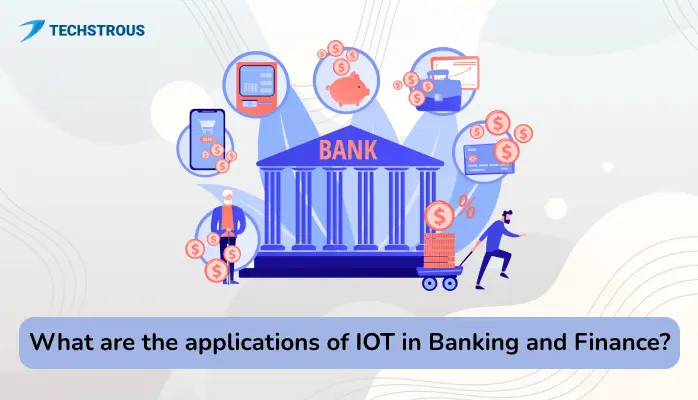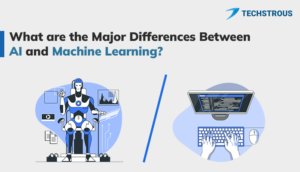Banking and finance is one of the primary industries that significantly contributes to a nation’s growth. As more and more individuals connect to Banks, this industry has to deal with large amounts of data. Providing accurate results and top-notch services has become mandatory for every Bank. IoT is the latest technology that has the potential to excel the output and furthermore the efficiency of this sector. In this article, we will discuss some major benefits and applications of IoT in Banking and Finance.
What Does IoT in Banking and Finance Mean?
IoT in the Finance industry means implementing IoT devices in Banks and the finance sector for better and accurate results. IoT is an interconnected network of smart devices that constantly share data for real-time monitoring and evaluation. With this technology, the finance sector becomes more secure, fast and provides top-notch service.
Benefits of Using IoT in Banking and Finance
The Internet of Things has numerous advantages from safeguarding your home to smart car. Below we will discuss the advantages of using IoT for finance and banks.
#1. Better and Improved Security
IoT ensures enhanced security in banks. As the IoT is a network of interconnected devices, it becomes easy to connect CCTV cameras and other monitoring devices and access them remotely. IoT can easily detect any malicious program. It is the key component of any banking service that they should protect your money and valuable assets.
Also, IoT enables users to authenticate via biometrics while making the payment. Thus, it provides a high-grade security.
#2. Eliminate Fraudulent
Another advantage of using IoT in banking and finance is that it eliminates the possibility of fraud which is quite common and frequent in the banking industry. It detects unauthorized users by matching their details and also prevents the hacker or malicious intrusion. If someone tries to access your account, the IoT technology will temporarily block your account. Furthermore, you will receive the notification regarding this.
#3. Self-Operating
The key characteristic of IoT is that it does not require human intervention to operate. It is an automatic system that operates on its own. By equipping IoT devices in banking and finance, it becomes more smart, quick and precise. Many of the common tasks like opening a bank account, deactivating cards can be easily performed with the help of IoT devices which further reduces human errors.
#4. Personalized Feedback
Depending upon the transactional behavior of an individual, the smart technology can provide personalized feedback to users. It can help you to get better schemes and plans. Also, while using the ATM machines, you will get more appropriate and refined transactional suggestions. Moreover, you will get notified when your balance reaches the minimum limit. Therefore, IoT makes your banking experience more enhanced and personalized.
#5. More Efficient Payment Gateway
IoT based wearables and smart devices has made the payment gateway cardless and secure. With this technology, you can easily transfer money using NFC-Powered devices like your smartphones and smart watches. Along with that, integrating the blockchain technology makes the payment impermeable for hackers to breach.
Applications of IoT in Finance Industry
Digital Banking
Earlier, opening a bank account required users to wait for hours and after providing all the necessary details, it would take many days to open your bank account. But now, through digital banking, you can open an account in any bank in just a few minutes. Also, the chances of human error has been eliminated. For incumbents, visiting your nearest branch for any query is no longer needed. They can now ask their questions to the chatbots which gives them a fast and effective solution to their problem.
IoT Based Wearables for Authentication
Verifying the authenticity of users for initiating the transaction is mandatory to ensure security and reliability. With the advancement of IoT in banking and finance has excelled the security parameters. IoT based wearables and smart devices equip banks to authenticate users based on their biometrics and NFC-Powered devices.
Another application is the smart speakers that assists users through vocal instructions. Like, if you want to deactivate a service from your bank account, you can simply ask. The smart speaker will provide you with concise and efficient solutions.
Secure ATMs
In ATMs, IoT devices support real-time monitoring and cash detection. Thus, it prevents any case of malicious activity and breach of your card details. If someone tries to access your details, it will be immediately identified and you will get notified quickly. Along with that, integrated with the Blockchain technology, it becomes impossible for a hacker to steal your credentials.
The IoT devices adjusts the lights and other electrical equipments accordingly. If the ATM is vacant, the smart devices automatically get switched to minimum power consumption. It will significantly reduce the maintenance cost.
Fast and Efficient Trading
Making better decisions in trading and stock marketing is one of the most profitable applications of IoT in the field of Banking and Finance. It evaluates data based on the real-time monitoring and evaluates the best options to trade. After that, it allocates the capital in a more efficient way.
Challenges with IoT Technology in the Finance Industry
Not only benefits and application, IoT also has some limitations that every industry using this technology has to deal with. IoT is currently in its initial phase which makes it vulnerable and less accurate. It does have a specific standard and it collects lots of data most of which is worthless. It has top-notch security. However, a skilled hacker can make an intrusion. Although they can not control the IoT device but can manipulate the data obtained from that.
Conclusion
Implementing IoT in banking and finance not only helps to increase productivity but also makes the process streamlined. It offers numerous benefits and has various applications in the banking and finance industry. This technology increases the output and accuracy which further improves efficiency. Although it has some drawbacks, these limitations will be eliminated as the technology develops.




